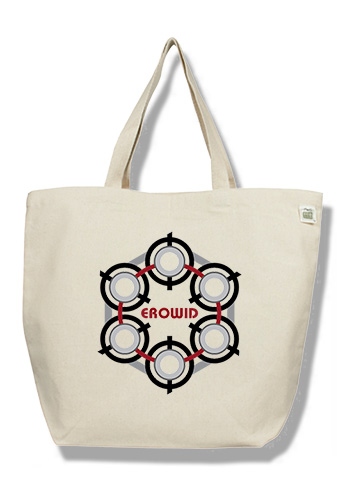Ayahuasca: alkaloids, plants & analogs
Section 3 : Part 2 :
Jurema
(Jurema prêta)
Mimosa hostilis (Martius) Bentham = Mimosa tenuiflora (Willdenow) Poiret
A Brief Look at the Species
Known active components:
DMT (in excess of 0.5% reported from the root bark.)
Part used: Root-bark.
Commercial rootbark is tinged purplish-red, inside and out, with a brownish or blackish exterior and comes mostly in fairly large, thick pieces. It breaks up and shreds easily for extraction.
The material we have seen from Chiapas is more purple-red and darker than the material we have seen from Brazil which has been more reddish or even pinkish.
The stem bark is used in Mexico for production of a burn medicine but it is too low in alkaloid to serve effectively as a DMT admixture for ayahuasca making.
The literature includes mention of the use of its seeds but this seems to be in error as the apparent source for the claim ceased to include this note in any of his myriad of works published after 1965. See R.E. Schultes 1965 Planta Medica 13: 125-157. Also in 1963a Harvard Review 1: 18-32 and 1963b Psychedelic Review 1: 145-166.
TLC of seeds, by J. Appleseed, detected no alkaloids.
Preparation
Isolation
Dose:
(8-10-)12 grams of dried root bark is a good and solid dose. (8 grams is recommended for first trial.)
Common names:
- carbonal [Common name also used for several other Mimosa and Acacia species. All are common charcoal and/or firewood sources]
- cabrera [Meaning "goat-herd"]
- cují
- cabrera (Venezuela- Columbia)
- jurema
- jurema preta = jurema prêta [Meaning "black jurema"; probably in reference to the commonly blackish stems] (Brazil) [Also as Yurema according to Schultes]
- Tepescohuite (Mexico) [Barneby 1991]
- Jurema
- Jurema Negra
- (variable; according to tribe) [Silveira Barbosa 1998]
Synonyms and Their Descriptions
Earliest reference to jurema was in the late 1700s but the botanical identification of the source for the drink did not begin until 1873 and, although described by Mello Morais in 1881 [1], [and others later: See 2], the entheogenic use of Mimosa hostilis as the basis for the jurema brew was substantiated only in 1946. Schultes 1978.
While of ancient and much more widespread use in former times, apparently very few groups exist that still use it; these being primarily mixed blooded people who have reconstructed what they believe were traditions lost during acculturation. For some sad reason such people's religious beliefs are commonly deemed fair game for dismissal and ridicule by a disturbing number of observers; apparently for not being anthropologically "pure". See our comments in Sacred Cacti on similar comments made by Weston La Barre.
Most likely this decreases in use is due to the dramatic impact that mining, `development' and acculturation have had on people native to its regions of occurrence and traditional use. Not just its use, but most cultures that once lived in these areas no longer exist in any recognizable form.
While this is the case, the lack of continual cultural integrity, resulting due to invasion and "acculturation" and production of "mixed blood" people, does not even remotely justify rejecting these people as being capable of entering into a meaningful relationship with the plant (as have humans since before recorded history) or from their religious and spirautal beliefs and traditions as being subject to dismissal as trivial (or falling far short of the spiritual "trueness" of some more "pristine" culture) as seems to be the practice with some modern ethnobotanical authors.
Descriptions:
"Semi-hardy thorny tree to 15 foot....thick roots..." Gnostic Garden 1997 catalog
"Hardy spreading tree to 15 feet, armed with thorns. Bears cylindrical spikes of fragrant white flowers..." ...otj 1995 catalog
See Barneby 1991
[These pieces of taxonomic poetry should be read slowly:]
"Often vulnerantly prickly, microphyllidious arborescent shrubs and trees commonly 2-5 m. with stiff, knotty fuscous, livid or blackish branches erratically armed with stout subhorizontal castaneous or livid aculei 2-10 mm arising from a broad swollen pediment, the sometimes unarmed hornotinous branchlets and foliage puberulent and ± resinous or viscid with minute soft hairs 0.1-0.3 mm and mostly sessile or semi-immersed, but on some stems partly short-stipitate glands ± 0.05-0.1 mm diam., the plane firm lfts subconcolorous, dull olivaceous often brunescent when dry, facially either glabrous or finely puberulent, dorsally sprinkled with semi-immersed glands, often minutely ciliolate, the fl.-spikes from axils of fully expanded or already fallen lvs, the inflorescence in consequence wither immersed in foliage or on defoliate annotinous branchlets. ..."
A syndrome of viscid foliage, strongly 4-ribbed calyx with incurved lobes, and a stipitate thin-walled pod charged with mixed sessile and stipitate glands, the valves bullately distended over the seeds, neatly defines this widespread species. " Barneby 1991
Occurrence & distribution
Cultivation
Mimosa species
Also use the search engines at:
Notes #
- As "Jurema (Mimosa jurema)" Page 228 of Mello Morais 1881 Phytographia ou Botanica Brasiliera: Os indios extrahem da jurema, certa especie de vinho, que embriaga, com transporte delicioso; e para este fim, tiram a casca, poem-n'a em infusão, ajuntam-lhe mel de abelhas, para corrigir o gosto adstringente d'essa embriagente bebida, e guardam-n'a para o uso." As quoted on page 336 of Schultes 1978c.
- `Narcotic effects' were reported in E.W. Freise 1933 Boletim de Agriculturea do Estado de São Paolo, p. 384; according to deMoraes et al. 1990.


